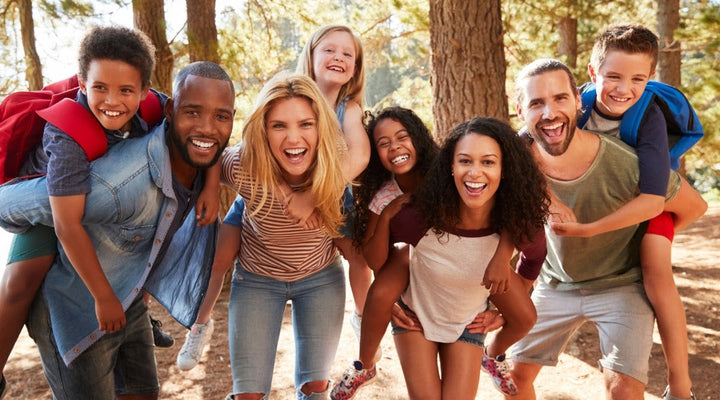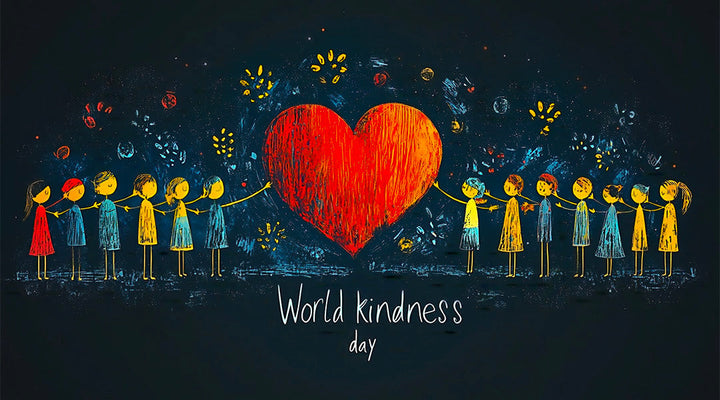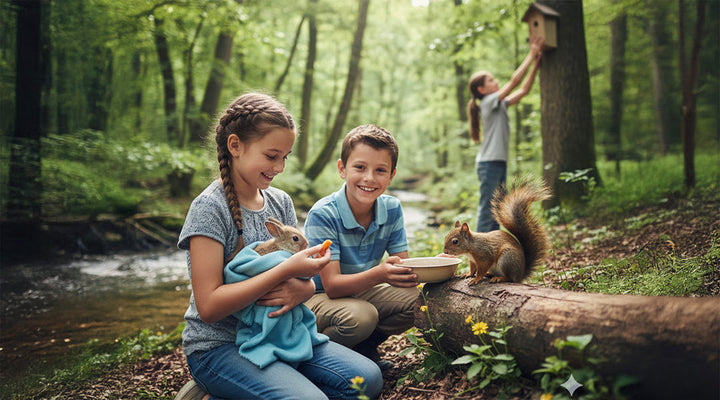
Amitie' - A Memorial Foundation For Suicide Prevention
Lifeboost family, if you’ll allow me, I feel the need to begin today in a different tone.
The topic of suicide is certainly a heavy, but critically important, one. And, because of this heaviness, sometimes we shy away from speaking of such matters.
However, that’s the last thing needed when it comes to suicide. In fact, the opposite must occur for us to be truly effective as we seek to help those in need.
Most everyone has been touched in some way by suicide.
Personally, I’m writing to you now through tears, having been closely affected myself. So, I know how hard it can be to talk about this.
But, bringing awareness to suicide is one of the first crucial steps in prevention.
Many of you are familiar with the 1980’s slogan “knowing is half the battle.” Well, in the war to prevent suicide, awareness or consciousness of this threat is a needed bridge in this battle as it can better aid us in coming alongside those in need, offering friendship, kindness, and connection which can help to prevent this act altogether.
So, from here forward, we’ll be discussing suicide awareness, ways to prevent suicide, we’ll highlight a foundation devoted to this work, and look at ways you can be a friend, offering support and connection in the lives of your family members, friends, coworkers, and more.
The Vital Importance of Suicide Awareness/Prevention

Between 2000-2021 suicide rates increased by 36%. And, after this time, both in the heart of and coming out of the pandemic, I doubt I have to inform you of the fact that this rate rose dramatically, especially amongst our nation’s youth.
In fact, as of February 2023, suicide is the second leading cause of death in individuals between the ages of 5-24 in the United States.
In 2021, 48,183 people lost their lives to suicide. To put it in other terms, that’s 1 death by suicide in our country every 11 minutes.
And, the number of people who’ve reported that they have thought about or attempted suicide is much higher, as in 2021 more than 12 million Americans seriously thought about suicide, 3.5 million people planned a suicide attempt, and 1.7 million people actually attempted suicide.
While this topic is definitely a difficult one to discuss, these discussions and the awareness they can bring are an important first step in suicide prevention.
Knowing the gravity of this issue leads to discussions of knowing what to look for, of risks, of the tools needed for aid, and of the ways you can support others or receive help for yourself.
Take risk, for instance, mental health professionals have identified a variety of factors that may contribute to a person’s risk of suicide.
Suicide is very rarely caused by a single element, instead a variety of risk factors can combine to increase the risk of suicide, including individual, relationship, community, and societal factors.

The CDC lists multiple factors within each of these realms:
Individual
- Previous suicide attempts
- A history of mental illness or depression
- Chronic pain or other serious illness
- Financial problems or job loss
- Criminal or legal problems
- Substance use/abuse
- Aggressive or impulsive tendencies
- History of adverse childhood experiences (or current experiences)
- Violence, victimization, perpetration
- A sense of hopelessness
Relationship
Here, when experiencing harmful or hurtful things within a relationship, these can contribute to one’s risk of suicide, such as:
- Bullying or harassment
- A family member or loved one’s history of suicide
- Loss of a relationship
- Social isolation
- Violence, even a great amount of conflict in a relationship
Community
- Lack of access to healthcare
- Discrimination
- Community violence
- Historical trauma
- Acculturation stress
- An increase of suicide within a community
Societal
- Unsafe media portrayals of suicide
- Ease of access to lethal means of suicide amongst those at risk
- The stigma often associated with mental illness and seeking help
Knowing these risk factors can help us identify within ourselves and others the need for help, or they can even provoke needed conversations which can lead to the receipt of said help.

Some health providers can help to identify the level of risk for individuals by screening patients based on the above items. Of course, if or once a risk is identified, those in need can be directed to resources and systems that are able to provide needed care or follow-up assistance.
Then, equally as important as these risks are those items which provide protection against suicide in these same areas we mentioned above.
And, this is where many of us can step up, step in, and reach out to help!
Suicide prevention most always involves the help, aid, or intervention of others.
What’s something often said to those individuals struggling to navigate harsh, harmful, or hurtful circumstances in life (from experiences, to depression, anxiety, and more): “you’re not alone.”
And, here’s where we can live out that sentiment in the lives of those in our family, our circle of friends and acquaintances, our neighbors, even those in our communities we aren’t aware of at this very moment.
Suicide prevention on an individual level involves:
- having effective coping and problem solving skills, each of which are available through mental health professionals, schools, or organizations like those we’ll highlight in a moment, such as Amitie’
- identifying, realizing, or affirming reasons to live such as family, friends, pets, etc
- having a strong sense of cultural identity
Then, when it comes to relationships, you can play a huge role in the lives of others, protecting against suicide by:
- offering support to your family members, friends, and/or partners…and might I add, this same encouragement and support can go a long way when offered to coworkers, neighbors, and others too
- staying connected to others (This can obviously go both ways, where staying connected can be a protective measure against suicide, but also offering a means of connection for those who may be struggling is vitally important as well.)
Within a community, there are a variety of places you may be a part of, whether it be work, school, or a particular sport or club. Here, as we just mentioned, this can be two sided as being connected can protect against suicide, but also we want to be sure to facilitate connection for others.
So, as you become aware of these risks and protective factors, seek to reach out, be a friend, and connect accordingly.
Within a community, these protective factors include:
- feeling connected at work, school, or within an organization
- access to ongoing, quality physical, behavioral, and mental health care
Then, within a society, protective factors here include:
- cultural, religious, or moral objections to suicide
- reduced access to lethal means of suicide
…though may we add here: please do not ignore risk factors known amongst your friends or family members (or others) simply because you believe they may religiously (etc) object to suicide or because you don’t believe the indivudal would have access to a means by which they could end their own life.
One theme that seems to surround each of these protective factors, and one which is recognized by mental health professionals as well as larger organizations like the CDC is that of connectedness.
As far back as 2011, the CDC began promoting connectedness as a primary strategy for preventing suicidal behavior. Why? Because connecting with others provides support, it provides positivity and perspective which, as the CDC so appropriately states, “helps to buffer the effects of risk factors in people’s lives.”
This can happen within families, friendships, partnerships, coworkers, minority groups, schools, communities of faith, and other organizations, etc.
But, please know that while this connectivity is vital in all our lives, for some it may only be a first step in receiving needed help.
In fact, as we’ve briefly listed these stats, risk factors, and protective factors, while such information is a first step in helping others or yourself, there is much aid yet to be had in the battle against suicide, and that’s why we’d like to introduce you to Amitie’...
Grata Medium Roast
A delightful choice for those seeking a balanced and smooth flavor profile
Shop Now
A Foundation Of Friendship In Suicide Prevention

Amitie' is a memorial foundation that seeks to equip teens and their families with the knowledge and tools necessary to prevent suicide, all through the power of friendship.
As "amitié" is the French word for friendship, the name is abundantly appropriate for this nonprofit rooted in amitié.
A quick glance at their website will also reveal Amitie'’s logo, a butterfly.
Butterflies are often used as a symbol of endurance, change, hope, even life. And, what better image could be more fitting than a symbol of life and hope when seeking to reach out, be a friend, and bring awareness to that which is in critical need of prevention.
Amitie' was formed when a group of high school friends found themselves affected by their classmate’s suicide decades after their teen years, soon prompting the realization that together they could do more to achieve their common goal and desire: “to prevent others from having to learn what they now know.”
Regina Graff is the president of Amitie', and she’s been speaking to teens for more than 20 years, volunteering her time to give lectures at schools, camps, churches, and any other groups in need.

In her lectures, Graff reaches out on a personal level, helping teens understand their value and importance in this world.
As Amitie'’s overarching goal is to prevent suicide by raising awareness, Regina’s time spent talking to teens doesn’t cover statistics, nor does she simply direct folks to the suicide hotline number.
Instead, she talks to teens as real people. She shares the realities, the raw truths surrounding suicide.
There are three main topics addressed in these lectures through Amitie'’s outreach program:
- What to do if you’re struggling with depression or suicidal thoughts
- How to recognize and reach out to family or friends in crisis, as well as where to advise them to get help
- Raising awareness to those who may be causing stress/distress in others, i.e. bullying and harassment
In conjunction with these topics, Regina shares with teens what happens after suicide and how a single suicide can affect so many people, even for the rest of their lives.

In these talks, she has conversations with teens about how suicide can be an instant decision, but that it is ultimately a permanent solution to a temporary problem(s).
Her time spent with teens also includes ways to recognize symptoms in those who may be struggling as well as how to appropriately take action.
Amitie' also talks with teens about how to reach out to different people, to those who are or seem to be lonely, as well as how to build real friendships among themselves, even developing a network of good people around them to share both the joys and the pains of life with.
Those who’ve had the privilege of sitting under Amitie'’s lectures have expressed that these discussions are held with sincerity and compassion, dealing with all of the levels of suicide in a way that is truly life-changing.
One teacher explained her experience with Amitie' as follows: “This program does a wonderful job of speaking to and encouraging people to stay strong through tough times. Several of my students have said that this was the best speaker they have ever heard! These lectures have helped many people. I am very grateful for them speaking to my students!”
Aside from these free lectures provided by Amitie', the foundation also funds an annual essay scholarship contest with the aim to get young people (junior high and high school students) talking about suicide.
Helping Amitie', Helping Others

I opened today with a bit of vulnerability, and to illustrate the vital importance of the type of friendship and connection needed in relationships which we’ve discussed at times here today, I’ll close with a similar personal transparency.
I won’t go into great detail, but as many of you likely know, life isn’t always full of pleasantries. And, in my late teen years, there were multiple intense situations spanning across the realm of family, school, and other relationships that left me feeling unfathomably hurt, alone, depressed, and desperately seeking an end to the pain and loneliness I was feeling.
I mention this because I’ve known Lifeboost’s CEO, Dr. Charles, my entire life, and it was during these times that he, and a few others, truly saved my life.
Throughout these difficult times, Charles reached out to me. He and others picked up the ringing phone when I reached out myself.
He offered support and encouragement, invited me to visit at times throughout our first years of college where he and his friends wholly welcomed me, and unbeknownst to him (and others), helped to provide a balm for wounds which ached deep enough to paint a “lying picture,” an image in my mind that unfortunately portrayed the message that life isn’t worth living.
You see, even small conversations we had offered glimpses of hope for me.

And, his friendship not only allowed me to share my joys and pains, but it also did something to that “lying picture.”
His support, that needed kindness and source of connection - it brushed away the top coat on this picture, a coat that veiled the intense beauty in life that existed just below the surface where I’d sadly been living.
Such friendships, connections, and relationships don’t eradicate the pains of life, but they do put life into perspective.
When you reach out to a friend, when you take the time to listen, when you’re simply there for others, there’s no other way to say this: you will never know what good this can do in someone’s life!
It sounds like a solution that’s too simple for such a great and heavy issue, but this type of connection is a vital part of the aid needed in such situations.
And, this is what Amitie' teaches teens and families surrounding the realities of suicide, fueling them with the tools for connection, for friendship, and to help and support those people in their lives who need it most.

As we mentioned above, the work of Amitie' is truly life changing, as they seek to educate people so they can receive the help they need or help others to find the same type of aid.
And, recently here at Lifeboost we were grateful to give back in a small way by donating coffee to Amitie' to include in a basket for an auction event in August.
Each year, The Gulf Coast Bank And Trust puts on a silent auction, and the nonprofits designated with those items donated receive 100% of the proceeds collected.
Nonprofit organizations, like Amitie’- A Memorial Foundation for Suicide Prevention, couldn’t do what they do without the support of others, so if you’d like to follow our lead and donate to this worthy cause, you can support Amitie’ via monetary donations directly through their website: https://www.savinglivesla.org/
Donating is a way to fund Amitie'’s mission.
And, being a friend, offering support, and equipping yourself with the tools to help others in need is how you can live out Amitie'’s mission:
“to prevent teen (and all) suicide through education programs for teens and their families, intervention to provide assistance and facilitating support from the mental health community.”

**If you or someone you know is struggling with depression, suicidal thoughts, or mental-health related distress, know that you’re not alone. Please, don’t hesitate to reach out for help or support.
If you are in a crisis situation and need immediate help or support, you can contact 1-800-273-8255.
You can also access help by texting TWLOHA to 741-741.
The national suicide crisis lifeline can be reached by calling or texting 788.
And, you can also receive help through the suicide crisis lifeline chat at https://988lifeline.org/.
Enjoy our new Medium Roast
Get a fresh morning coffee
Check out Lifeboost Coffee Medium Roast.

Becky is a mother, educator, and content writer for Lifeboost Coffee. She has had three years’ experience as a writer, and in that time she has enjoyed creatively composing articles and ebooks covering the topics of coffee, health and fitness, education, recipes, and relationships.
- https://www.savinglivesla.org/
- https://www.cdc.gov/suicide/index.html
- https://www.nationwidechildrens.org/newsroom/news-releases/2023/02/bridge_ruch_youthsuicide_pandemic
- https://save.org/
- https://sprc.org/effective-prevention/a-comprehensive-approach-to-suicide-prevention/promote-social-connectedness-and-support/
- References for the article to confirm data and information.










